Meet “Russian disease,” the centuries-old corruption plaguing Ukraine invasion
From expired rations to sunken flagships, it echoes historical defeats, transforming Putin's "three-day" campaign into a prolonged struggle against not just Ukraine, but Russia's own systemic rot.
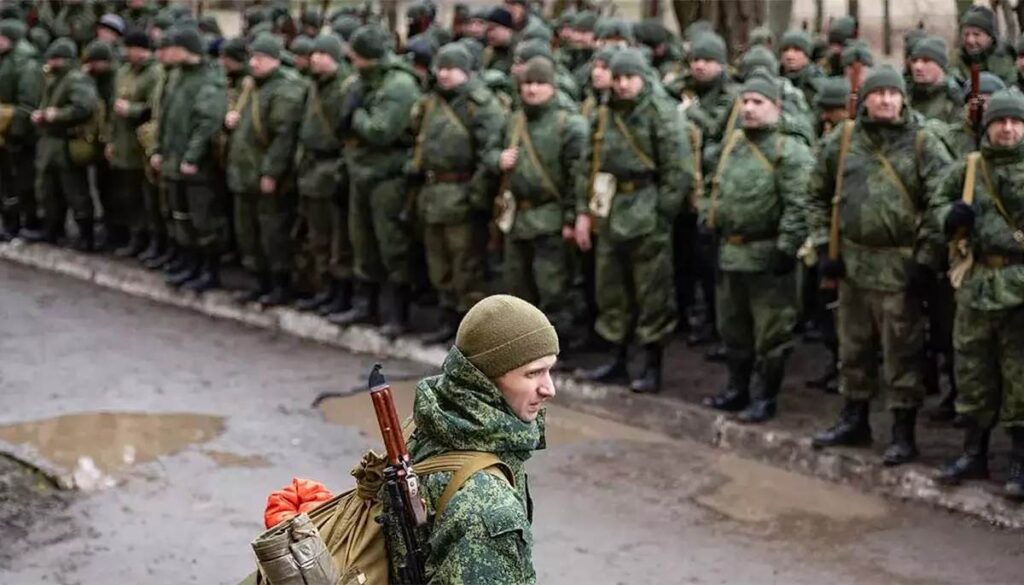

The invasion of Ukraine has plunged Russia’s economy into a case of “Dutch disease,” an economic paradox where a country’s income from a specific sector—in this case, oil—becomes disproportionately high, damaging other industries. The global surge in oil prices, driven partly by the war, led to a significant increase in the ruble’s value against other currencies (a phenomenon known as currency appreciation) in 2022.
This strengthening of the ruble, while seemingly positive, actually slowed down other economic sectors by making Russian exports more expensive and less competitive in global markets.
It is widely recognized that Russia has been propping up its overall economy through substantial cash injections from the country’s reserves. Key investments are now directed towards military production and other war-related expenses.
In an extraordinary transformation unthinkable in democratic countries, Russia now allocates nearly half of its state budget to expenditures related to the invasion.
The influx of funds for military purposes may create another paradox that is uniquely characteristic of Russia. This phenomenon, which we might term the “Russian disease,” stems from the ruling elite’s misplaced confidence in their ability to win any war due to their resource advantage.
Paradoxically, this overconfidence often leads to failure, even in smaller local conflicts, due to corruption and inefficiencies fueled by this misguided assurance.
Selective historical memory: Existential wars vs. regime-driven conflicts
This paradox arises from the Russian ruling regimes’ overwhelming belief in their country’s invincibility and the notion that simply investing resources will ensure victory. A narrative of Russia’s historical military prowess, though historically inaccurate, bolsters this confidence.
The Russian elite’s belief in their military superiority is based on a few notable experiences: large defensive wars like the Napoleonic Wars and World War II, and conflicts against minor military powers. However, this selective memory ignores numerous instances of military failure.
In smaller offensive local wars, the Russian elite often view these conflicts primarily as opportunities for personal gain. This mindset leads to inefficiency, overconfidence, and endemic corruption, resulting in poor military performance and often total losses in these smaller conflicts.
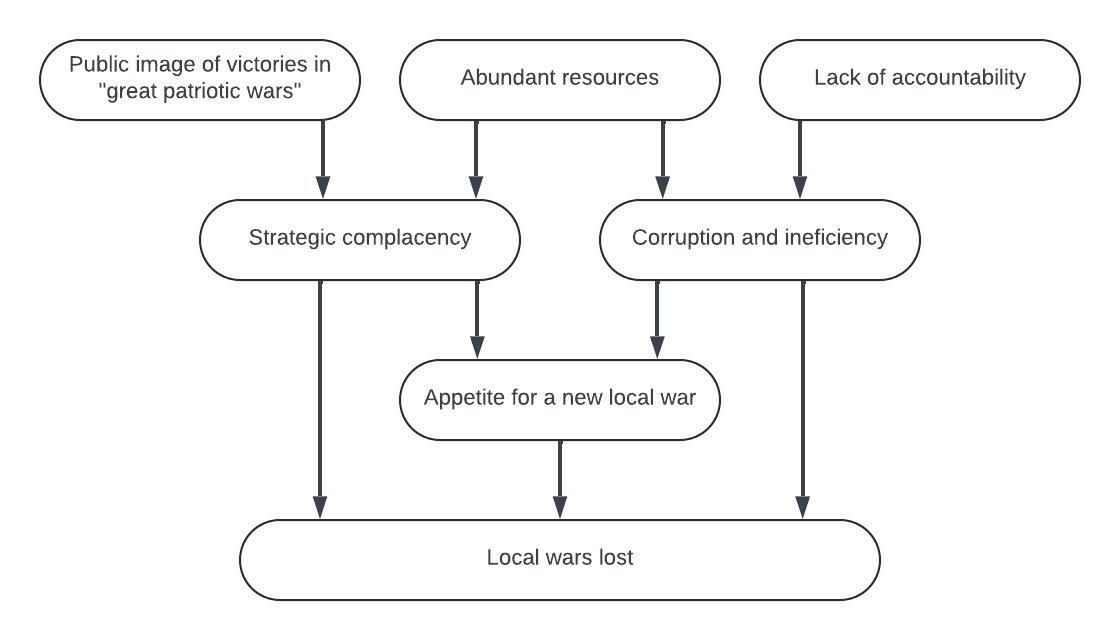
The large existential victories in Russian history, including the Napoleonic Wars and World War II, were achieved through the complete mobilization of national resources and significant efforts from allies—a fact that Russia tends to downplay. These wars were considered existential for the nation’s survival and were defensive in nature.
In contrast, other wars were either non-existential or existential only for the regime leaders. The elite viewed these conflicts as opportunities to advance their careers and profit, often disregarding the ultimate outcome. Consequently, these conflicts were largely lost despite Russia’s initial resource superiority. Notable examples include:
- Crimean War (1853-56)
- Russo-Japanese War (1904-05)
- World War I (1914-1918)
- Soviet-Afghan War (1979-1989)
Each of these campaigns began with high confidence but ended in significant complications for the ruling regime.
Endemic corruption: The rot within Russia’s military
The ongoing full-scale invasion of Ukraine echoes these past conflicts, revealing striking similarities. Following the Soviet-Afghan War and the dissolution of the Soviet Union, Russia engaged in local conflicts in Chechnya, Georgia, and Syria, where the opponents’ military capabilities were negligible compared to Russia’s.
Expecting a swift “three-day” campaign in Ukraine, Russia has, for the first time in decades, encountered a determined opponent that offers unprecedented resistance.
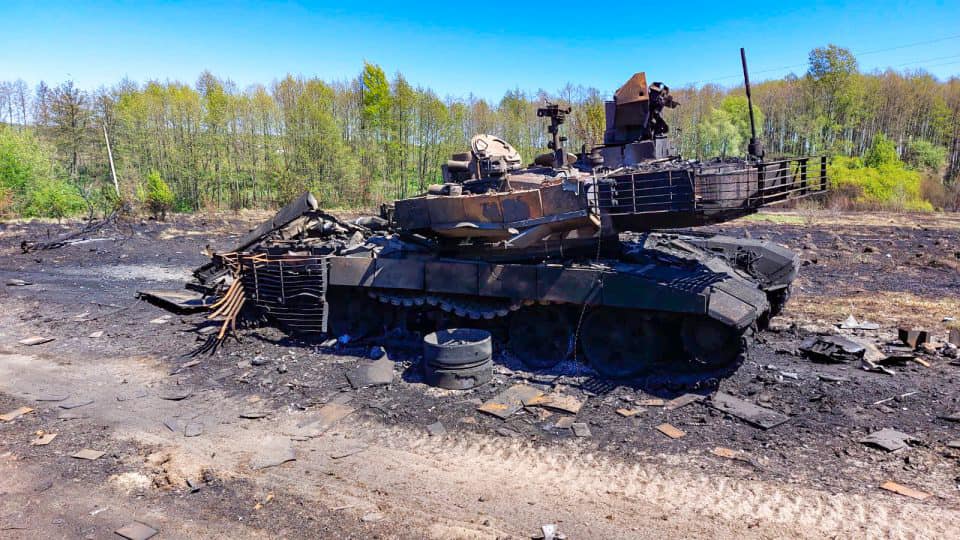
In all these cases, endemic corruption has been a dominant factor in Russia’s losses. The Russian military’s exclusive reporting structure to the head of state, with little or no external oversight, enables widespread corruption. The army and navy operate with an untouchable status, enjoying almost uncontrolled budget spending. During peacetime, internal military affairs rarely face external scrutiny. It is only when conflict arises that the extent of corruption becomes apparent, as the military often appears to be decaying from within.
Former Russian Defence Minister Andrei Kozyrev claimed that about a fifth of the budget allocated for military improvements and upgrades has been embezzled. Past scandals highlighting the scale of corruption include:
- The Peter the Great warship scandal (2010)
- The Oboronservis scandal (2012)
Both cases involved substantial theft of funds, dramatically impacting Russia’s military capabilities.
Russia’s naval forces have been particularly plagued by corruption, with devastating consequences for their operational capabilities.
Russia’s largest ship, the Admiral Kuznetsov—its sole aircraft carrier and flagship of the Russian navy—has been a focal point of a whole chain of embezzlement cases. Funds intended for its repairs have been stolen numerous times, leading to repeated fires and engine failures. The vessel is still in docks unable to be completed.
In March 2022, a Russian naval officer and two independent contractors were arrested for corruption after stealing nearly 700 million rubles ($9.6 million) intended for missile upgrades on one occasion, and another billion rubles ($13.7 million) for similar purposes on another.
One of the ships affected by these missing upgrades happened to be the flagship of the Russian Black Sea Fleet, Moskva, was subsequently hit and sunk by two Ukrainian Neptune missiles just weeks later.j
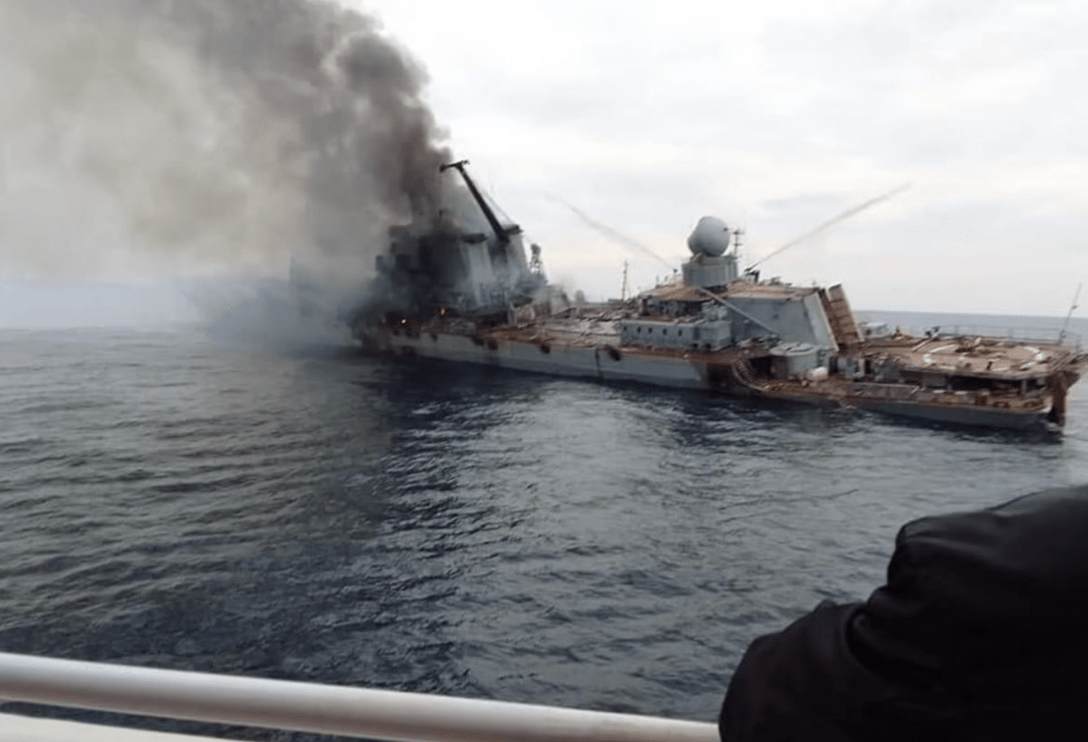
Logistical failures exposed in Ukraine invasion
The full-scale invasion of Ukraine in 2022 unveiled significant logistical shortcomings in the Russian military. These included substandard uniforms, expired rations, and outdated military equipment. Operation commanders at various levels were implicated in both large-scale and petty corruption, including selling fuel and supplies for personal gain.
While corruption in the Russian military isn’t new, these issues have gained more prominence since the invasion began.
A particularly egregious problem has been the provision of poor-quality supplies to Russian soldiers. Reports suggest that troops have received decommissioned and unusable body armor, likely due to corruption in the procurement process. Some soldiers have even had to purchase their own basic supplies, including boots, medical kits, and food. These logistical gaps are largely attributed to graft and the misappropriation of military funds.
Deep-rooted corruption in the Russian military
Corruption within the Russian military is not a recent issue. Even in the early years following the Soviet Union’s collapse, corruption was deeply entrenched in the military system. The practice of paying to avoid obligatory conscription has persisted for decades, serving as a significant income source for various levels of the Russian military. Currently, reports suggest a fee of around $5,000 is required to avoid deployment to the Ukrainian front. This practice results in the poorest and least healthy individuals being placed on the front lines.
Attempts by independent media to expose these issues have been actively suppressed. A chilling example is the case of Dmitry Kholodov, a journalist investigating mafia connections to the military. Kholodov was given a briefcase purportedly containing documents revealing corruption. Tragically, when he opened the briefcase, it exploded, revealing it contained a bomb instead of documents.
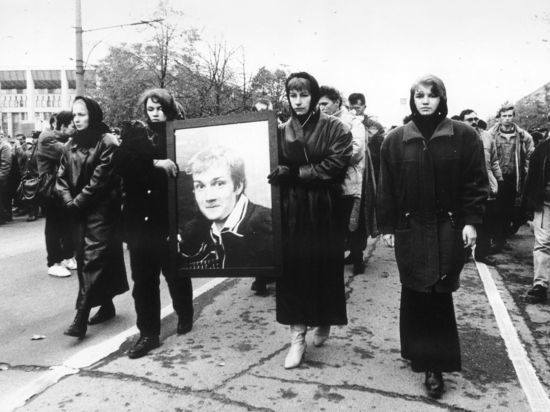
At the highest echelons of power, President Vladimir Putin has acknowledged the severity of corruption and its impact on war funding. In response, he appointed a new head of the Accounts Chamber, stating, “Russia has revenues, but no money. Neither spare nor reserve money. Therefore, it is necessary to tighten inspections.” Putin further declared, “You will find corrupt people and get the money from them.”
This directive suggests a potential scenario where businessmen and entrepreneurs might face accusations of corruption and be pressured to pay to avoid such designations. This situation underscores the pervasive nature of corruption even at the government’s apex.
The Russian defense industry has long grappled with corruption, which affects everything from arms procurement to military readiness. In 2012, former Defence Minister Anatoly Serdyukov, who had sought to address corruption, was himself dismissed due to involvement in an embezzlement scandal linked to Defence Ministry officials.
This incident exposed the misappropriation of funds intended to improve soldiers’ living conditions, resulting in substandard housing, poor equipment, and inadequate infrastructure for troops. These issues persist, with reports indicating that up to 40% of the Defence Ministry’s budget may be lost to graft.
One particularly pernicious form of corruption plagues arms procurement. Russian arms manufacturers struggle to produce modern, reliable weapons, largely due to the misappropriation of funds earmarked for research, development, and quality control.
A prime example is the much-vaunted Su-57 stealth fighter jet, which has encountered significant delays and technical failures. After more than two decades, only a few prototypes have been completed. Military insiders and experts attribute these shortcomings primarily to corruption and mismanagement within the defense sector. The ongoing war in Ukraine has further exposed these deficiencies, with Russian troops frequently relying on outdated or malfunctioning equipment.
Command structure failures: Nepotism and bribery
The 2008 Russo-Georgian War starkly illustrated how corruption and inefficiency in the Russian military compromised its operational capabilities. A critical issue was the lack of modernization in equipment and technology, forcing soldiers to rely on outdated vehicles, weapons, and communication systems. This problem stemmed largely from systemic corruption within the military’s procurement processes, where officials and contractors frequently diverted funds intended for equipment upgrades. Subsequent investigations revealed that military leaders routinely accepted bribes to secure contracts for substandard or obsolete technology.
Additionally, the military’s poor logistics and planning during the Russo-Georgian war revealed deep-seated issues within the command structure, exacerbated by nepotism and bribery. Commanders were frequently appointed based on personal connections rather than merit, resulting in ineffective leadership in the field. This led to confusion and delays at critical junctures of the war, particularly in troop deployment and coordination. As a result, Georgia mounted a more sustained resistance than the Russian forces had anticipated.
The “Russian disease” of corruption is not a contemporary phenomenon; its roots extend back centuries.
During the Crimean War (1853–1856), corruption significantly undermined the Russian military’s performance. A notorious example was the widespread embezzlement of military supplies and funds by high-ranking officers and officials. These corrupt practices left soldiers ill-equipped, poorly clothed, and inadequately supplied, particularly during the harsh winter months. The inefficiency and greed of military bureaucrats led to the diversion of vital resources, including weapons and food, for personal gain. Consequently, Russian troops were left vulnerable and unprepared against the better-equipped British, French, and Ottoman forces.
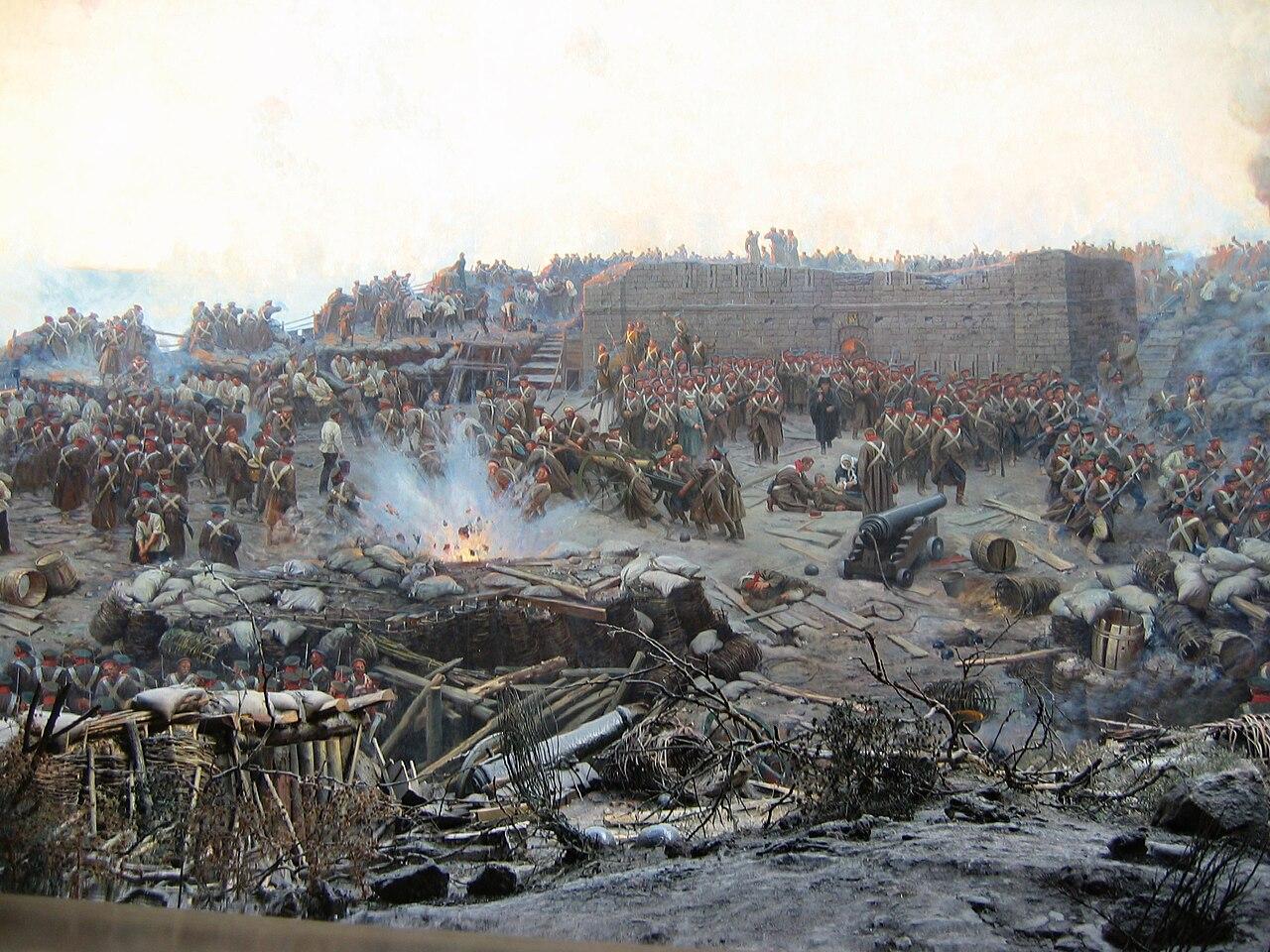
Additionally, the Russian military suffered from poor leadership and a rigid, outdated command structure. Many officers had purchased their commissions rather than earning them through merit and were more interested in maintaining their lavish lifestyles than in addressing the logistical challenges of the war.
This mismanagement contributed to significant defeats, such as the Battle of Balaclava and the Siege of Sevastopol. Soldiers were exposed to disease, starvation, and harsh conditions, severely weakening the Russian war effort.
The Crimean War ultimately laid bare the systemic issues plaguing the Russian military. It revealed an antiquated aristocratic system that prioritized personal connections over competence. The profound consequences of corruption and inefficiency were so severe that they catalyzed significant reforms in both the Russian military and bureaucracy in the war’s aftermath.
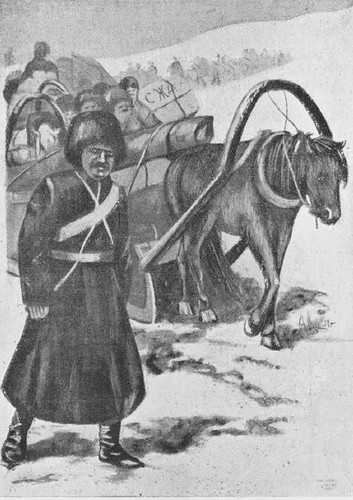
In 1918, imperial authorities attempted to rebrand World War I as the “Second Patriotic War,” drawing parallels to the 1812 Napoleonic War. This propaganda effort aimed to rally public support despite poor battlefield performance. However, history reveals that neither the military nor the civilian population embraced this narrative. The war became increasingly unpopular, especially as it precipitated severe economic downturns.
The failings during World War I, coupled with the well-documented inefficiencies and corruption exposed during the Russo-Japanese War of 1905, dealt a severe blow to the Russian military’s reputation. These factors significantly contributed to the eventual collapse of the imperial regime.
Drawing parallels to the present, both the elite and ordinary citizens once again reject the notion of a patriotic war. Many individuals now engage in combat primarily for monetary or material benefits rather than ideological reasons.
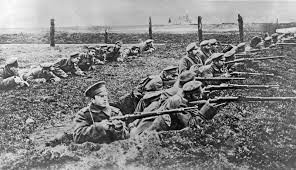
Putin’s desperate bid to tackle corruption
Currently, President Putin is making a desperate attempt to address the dire corruption situation by appointing Andrey Belousov as the new Defence Minister, replacing his longtime associate Sergei Shoigu. Belousov, an economist with no military background, is known for his longstanding support of Russian imperial ambitions. This appointment is widely interpreted as the initiation of a comprehensive audit of the Ministry of Defence, an organization that has gained notoriety as one of the most corrupt globally. In the wake of this change, several high-level ministry managers have been arrested or dismissed.
Despite these measures, many observers remain skeptical about the ultimate success of this anti-corruption drive. The prevailing view is that the war remains existentially significant only for Putin and his inner circle, potentially undermining the effectiveness of these reforms.
Putin’s attempts to reform the Russian military are widely seen as too little, too late. Meaningful reforms would require decades of sustained effort and, more crucially, would necessitate a fundamental change in the regime itself. As it stands, corruption within the Russian military is likely to remain a major factor contributing to its eventual failure, serving as yet another manifestation of the “Russian disease.”
Related:
- 10 honest facts about the Russo-Ukrainian war from top general Zaluzhnyi
- Outdated Western thinking empowers Russia’s war machine
- Five reasons the West must support Ukraine’s victory, not just survival



